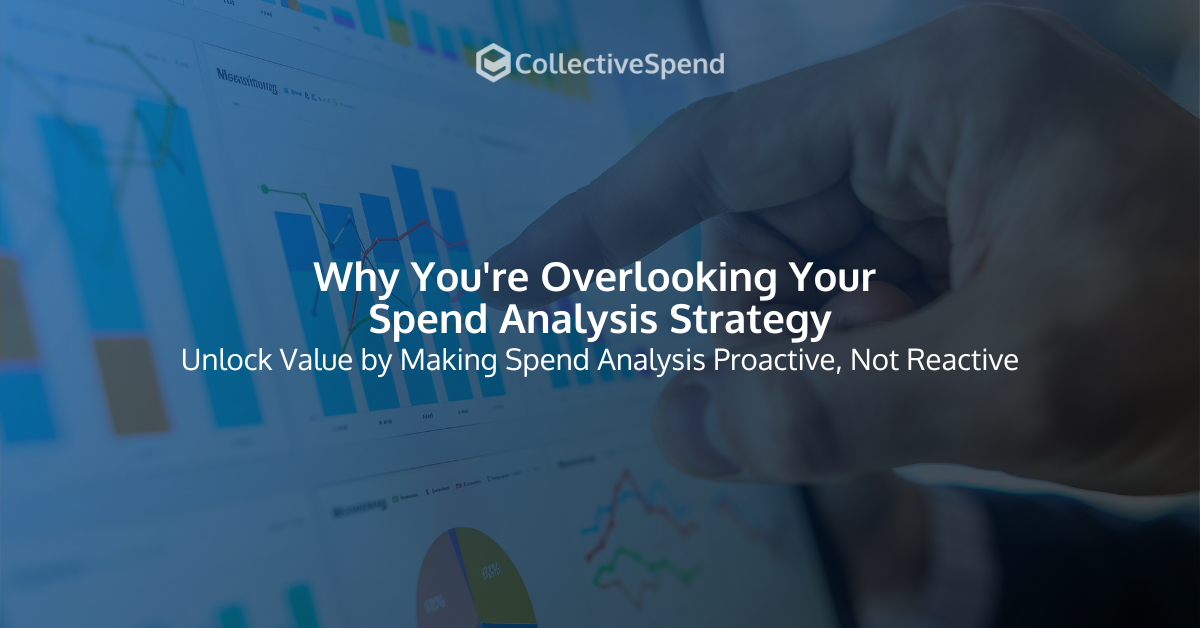Most procurement teams understand the value of spend visibility, but where things start to break down is in how that visibility is used. It’s easy to run standard reports, spot large expenses, and call it a day. But true spend analysis is far more than identifying big costs. The quiet problem is how smaller patterns get ignored and how scattered purchases continue to bleed value across categories. If reporting isn’t directly shaping smarter decisions, then the current strategy isn’t doing its job.
Why Traditional Reports Fall Short
We’ve worked with teams that generate dozens of reports each month, including spreadsheets, charts, and layered summaries. But if those reports only tell us what we’ve already spent, they’re missing the point. Static reports tend to focus on the past. They look backward and don’t connect insights to actions. They often lack context for why a purchase was made or whether it aligned with broader sourcing goals.
On top of that, reports usually rely on inconsistent inputs. If data from finance, operations, and sourcing comes in classified differently (or not at all), we end up chasing ghosts in our own systems. Small expenses disappear across departments. Supplier tracking becomes incomplete. Opportunities to validate contract terms or assess vendor consistency get buried under manual review cycles.
And that’s where stagnation sets in. If there’s no automation built into the spend analysis process, teams get stuck in repetitive cleanup instead of acting on insight. Spot buys repeat. Categories get bloated. Small errors snowball until fixing them feels more exhausting than addressing them early.
What Poor Spend Analysis is Really Costing You
The hidden cost of weak spend analysis usually doesn’t show up in a single transaction. It builds quietly across decision points that could have gone differently. Without strong analysis, companies miss the chance to consolidate suppliers who perform well and let go of those who don’t. Overpaying small vendors continues just because they’re familiar. Contracts go unreviewed for years.
Rogue spending is another fallout. Teams fall back on one-time suppliers, especially when speed beats process. These non-contracted purchases add up quickly, particularly without procurement involved. Left unchecked, this behavior can bypass pricing agreements built to protect budgets.
Worse, line of sight into risk gets blurry. Spot buys, unmanaged categories, or sudden volume changes can introduce suppliers without proper vetting. When these vendors miss deadlines, delay fulfillment, or neglect compliance standards and ESG policies, the risk is no longer just financial, but reputational too.
When spend analysis is weak, teams operate in reaction mode. Problems are spotted only after time, money, or trust is already lost.
How Modern Procurement Platforms Make Spend Analysis Smarter
Modern spend analytics should do more than observe; it should respond. With a well-chosen procurement platform in place, analysis shifts from static reporting to live monitoring and real support for sourcing choices.
One smart advantage is automated spend classification. Rather than waiting for each user to tag expenses the same way, AI accurately sorts spend by category and supplier. This cleans up data across departments and gives a more unified view of where money really goes. Patterns, like clustering of indirect spend or sudden spikes in spot buys, stand out fast.
Integration between analytics and e-sourcing tools matters too. When a pricing issue is detected, the platform flags it right away. If hundreds of spot buys are hitting the same area, it can suggest contract discussions or kick off competitive bidding. Centralized supplier information lets decision makers track cost, performance, and delivery metrics at the category level.
CollectiveSpend’s AI-driven spend analytics platform automates this entire approach, giving clients the visibility and actionable insights to plug leaks, strengthen compliance, and trigger smarter sourcing moves.
Key Behaviors of Procurement Teams That Maximize Spend Analysis
Technology alone doesn’t create results. The right team behaviors make or break the impact of strong spend analysis. The biggest shift? Alignment. When procurement, finance, and operations agree on what matters, spend analysis finally gets everyone on the same story and metrics.
Moving from reactive to proactive data use is a game changer. Instead of waiting weeks for reports, set live alerts around category growth or price jumps. Teams get early warning and can act ahead of budget overruns or contract misuse. Internal benchmarks, custom triggers, and data-driven sourcing windows give more time for real negotiation, less time chasing missed savings.
Another win is integrating feedback into the analytics platform. High-performing teams refine classifications, share real outcomes, and build processes that keep the tools learning and improving. This helps the platform forecast more accurately as more use cases are plugged in.
With AI and automation, repetitive analysis is handled in the background. Teams focus on the gaps, patterns, or trends that are hard to see in spreadsheets. Energy shifts from cleaning up mistakes to maximizing ROI, finding operational improvement, and closing out maverick spending.
A Smarter Look at Spend Means Smarter Procurement
The real difference in spend analysis is seeing what others gloss over. When teams stop focusing only on big expenses and spot what’s sneaking through in everyday buys, the impact is significant. Value hides in the small approvals, missed contract renewals, and low-dollar spot buys.
It isn’t about needing perfect data. It’s about asking stronger questions and using better tools. Consistent, informed action turns spend analysis into the foundation of cost control and smarter procurement for every category and every transaction. With upgraded strategy and the right technology, teams move from reporting on spend to actively managing and improving it.
When procurement decisions are grounded in strong data, the difference shows up across the supply chain. With smarter spend analysis, we give your team the clarity to spot trends early, hold suppliers accountable, and take action that improves outcomes, not just metrics. At CollectiveSpend, our approach combines automation and expert insight so you can move faster, waste less, and stay focused on value.

